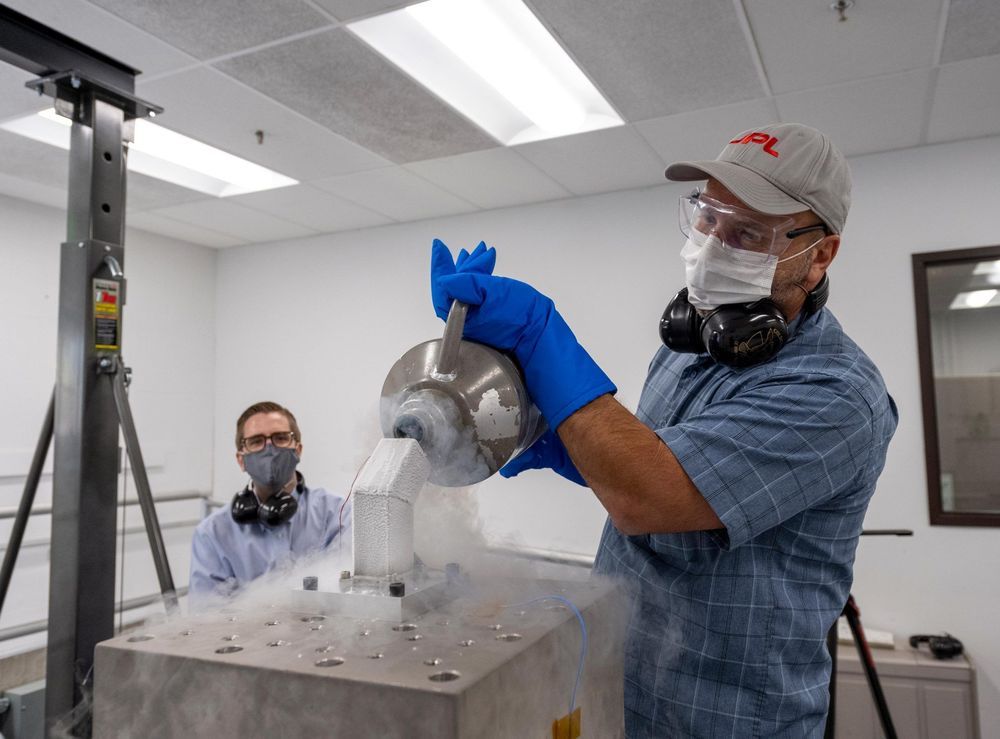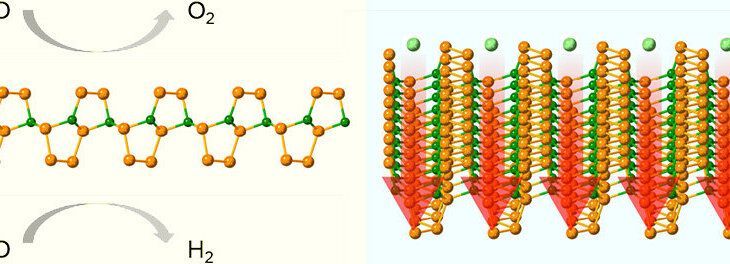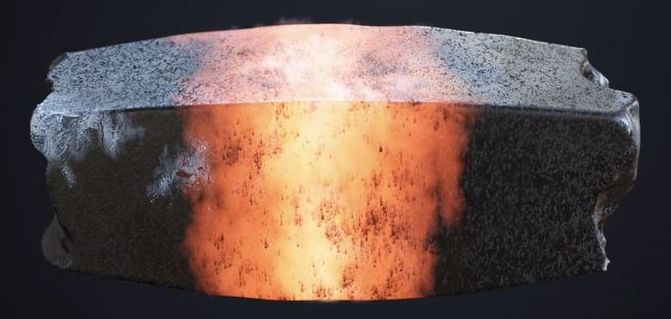Skeleton Technologies, a ultracapacitor speclialist, announced that together with the KIT, is working on a new groundbreaking graphene SuperBattery.



Many exploration destinations in our solar system are frigid and require hardware that can withstand the extreme cold. During NASA ’s Artemis missions, temperatures at the Moon’s South Pole will drop drastically during the lunar night. Farther into the solar system, on Jupiter ’s moon Europa, temperatures never rise above −260 degrees Fahrenheit (−162 degrees Celsius) at the equator.
One NASA project is developing special gears that can withstand the extreme temperatures experienced during missions to the Moon and beyond. Typically, in extremely low temperatures, gears – and the housing in which they’re encased, called a gearbox – are heated. After heating, a lubricant helps the gears function correctly and prevents the steel alloys from becoming brittle and, eventually, breaking. NASA’s Bulk Metallic Glass Gears (BMGG) project team is creating material made of “metallic glass” for gearboxes that can function in and survive extreme cold environments without heating, which requires energy. Operations in cold and dim or dark environments are currently limited due to the amount of available power on a rover or lander.
A new display produces stunning 3D images, by illuminating a small plastic bead which is levitated using ultrasound. This allows the display to be visible as well as to create audible sound and tactile feedback. Nature reporter Lizzie Gibney travels to the University of Sussex in the UK to learn more.

Evolutionary search has helped scientists predict the lowest energy structure of a two-dimensional (2-D) material, B2P6, with some remarkable features, including structural anisotropy and Janus geometry.
Janus materials—named after the two-faced Greek god of duality—have two surfaces with distinct physical properties. As such, they offer unique benefits, such as high solar-to-hydrogen efficiency.
Anisotropic materials exhibit different properties when measured along different directions. In the case of B2P6, the ionic diffusion is strongly anisotropic, a feature that can be potentially useful in affordable energy storage solutions, such as metal-ion batteries.

Meteorite material presumed to be devoid of water because it formed in the dry inner Solar System appears to have contained sufficient hydrogen to have delivered to Earth at least three times the mass of water in its oceans, a new study shows.
While the idea that enstatite chondrite (EC) meteorites contained enough hydrogen to provide water to the growing proto-Earth has been proposed, efforts to rigorously test this scenario have been hampered by difficulties in measuring hydrogen concentrations in ECs — an obstacle this study overcame.
According to models of Solar System formation, Earth should be dry. However, our blue planet’s vast oceans, humid atmosphere and well-hydrated geology boldly defy such predictions, making it unique among the other rocky planets of the inner Solar System.

Straubel was an early founding member of Tesla and the company Chief Technology Officer until last summer.
He officially moved to an advisory role at the company, but it is believed to have been a symbolic move to soften the blow of Tesla’s longtime technology leader leaving the company.
As we reported at the time, Straubel was already becoming less present at Tesla months prior to the announcement and spending more time on his startup: Redwood Materials.

Enstatite chondrite meteorites, once considered ‘dry,’ contain enough water to fill the oceans — and then some.
A new study finds that Earth’s water may have come from materials that were present in the inner solar system at the time the planet formed — instead of far-reaching comets or asteroids delivering such water. The findings published on August 28, 2020, in Science suggest that Earth may have always been wet.
Researchers from the Centre de Recherches Petrographiques et Geochimiques (CRPG, CNRS/Universite de Lorraine) in Nancy, France, including one who is now a postdoctoral fellow at Washington University in St. Louis, determined that a type of meteorite called an enstatite chondrite contains sufficient hydrogen to deliver at least three times the amount of water contained in the Earth’s oceans, and probably much more.

Our blue planet having water seems such a simple and obvious fact that the question of why Earth has water at all feels like a trivial one. However, the origin of this key ingredient for life has remained a long-standing topic of debate. According to models of Solar System formation, Earth, as an inner Solar System planet, should have little to no water. On page 1110 of this issue, Piani et al. ([ 1 ][1]) analyze enstatite chondrite meteorites, a material similar to Earth’s main building blocks, and address the origins of Earth’s water.
Early models of planetary formation predicted that the nebular gas near our young Sun was too hot to form ice.

Vanadium could be used for outer hulls of spaceships to absorb sun like energy or higher.
Vanadium-base alloys offer potentially significant advantages over other candidate alloys as a structural material for fusion reactor first wall/blanket applications. Although the data base is more limited than that for the other leading candidate structural materials, viz., austenitic and ferritic steels, vanadium-base alloys exhibit several properties that make them particularly attractive for the fusion reactor environment. This paper presents a review of the structural material requirements, a summary of the materials data base for selected vanadium-base alloys with emphasis on the V-15Cr-5Ti alloy, and a comparison of projected performance characteristics compared to other candidate alloys. Also, critical research and development (R&D) needs are defined.
The relatively high thermal conductivity and low thermal expansion coefficient of vanadium-base alloys, which result in lower thermal stresses for a given heat flux compared to most other candidate alloys, should enhance the reactor wall-load and lifetime capability. Since the mechanical strength of vanadium-base alloys is retained at relatively high temperatures, higher operating temperatures are projected for these alloys than for austenitic or ferritic steels. The refractory metals, including vanadium, characteristically exhibit good corrosion resistance in purified liquid metals. The vanadium alloys also exhibit favorable neutronic properties which include lower parasitic neutron absorption leading to better tritium breeding performance, lower bulk nuclear heating rates, and lower helium generation rates compared to the steels.